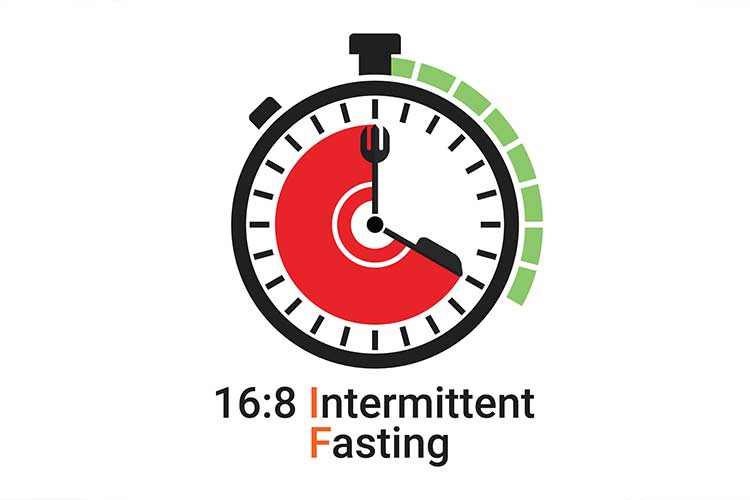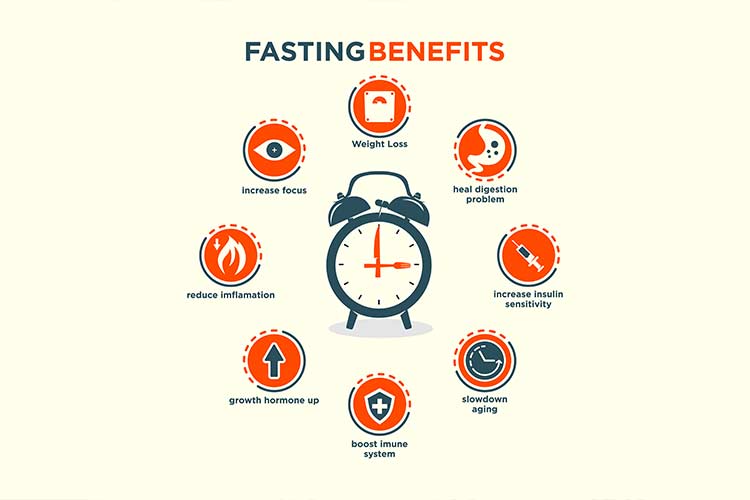Join Our eNewsletter!
Subscribe to our monthly newsletter to receive encouraging advice to help you lead a healthy lifestyle.

The Pros and Cons of Intermittent Fasting
Over the past few years, intermittent fasting (IF) has become increasingly popular. But is it just a fad, or is it really a healthy, sustainable way of eating?
What Is Intermittent Fasting?
Most people understand that fasting is not eating or consuming calories during a certain amount of time. It’s sometimes done for religious reasons, before having blood work done, or pre-surgery. Intermittent fasting, however, is a way to restrict the number of calories consumed in a day by only eating during certain hours. Most people use IF because of the claims that it can help them lose weight and improve their health.
There are several different types of IF, including:
- Time-restricted – This method uses set fasting and eating “windows.” The most common form of the method is 16/8, meaning you fast continually for 16 hours and only eat during the remaining eight hours. The most convenient way of doing this method is to stop eating around 7 p.m., so by the time you wake up in the morning, your fast is almost over. This method can be repeated daily or as many times per week as you like. Nothing should be consumed other than water, black coffee, and tea with no sweetener or other ingredients during the fasting period.
- 5:2 method – This method involves only eating a total of 500 calories a day for two days a week, then eating a healthy, normal diet the other five days. Preferably, the meals on your fasting days should be high in protein and fiber to help you feel full. Your two fasting days can be any days of the week, as long as a non-fasting day is between them.
- Alternate day fasting – This method is similar to the 5:2 method, but instead of fasting only two days a week, you fast every other day. Similar to 5:2, you limit your calories to 500 on your fasting days and eat protein- and fiber-rich foods to stay full. The other days of the week, you eat normally.
- One meal a day – This method, also called OMAD, involves eating one high-calorie meal within one hour and fasting for the next 23 hours. As with time-restricted fasting, nothing should be consumed other than water, black coffee, and tea with no sweetener or other ingredients during the fasting period.

Potential Benefits of Intermittent Fasting
Despite so many people singing the praises of IF, the health benefits of this way of eating are still being studied and determined. However, most of those who practice IF say one thing they love about it is that it’s simple and relatively easy to do.
For the most part, there’s no counting calories (unless you’re practicing 5:2 or alternate day fasting), and there are no foods that are off limits. You also don’t have to keep track of macronutrients, although you should always make sure you’re getting enough protein, fiber, vitamins, and nutrients daily.
Intermittent fasting also doesn’t necessarily need to be strictly adhered to. Unlike most diets, you can choose to practice IF just one day a week or every day, and for as long as you want.
Although IF has led to weight loss for many people, there’s no scientific proof that it’s any more effective than a traditional low-calorie diet. The reason IF may work better for some than calorie counting is because it provides a structure that makes it easier to limit calorie consumption.
Beyond weight loss, some practice IF because of the purported claims that it can reduce inflammation and boost immunity, contributing to the prevention of chronic disease. However, there’s no current research proving that IF accomplishes these goals any more effectively than losing weight and shedding excess body fat in general, no matter the method.

Potential Drawbacks of Intermittent Fasting
Intermittent fasting isn’t for everyone. If you’re not already used to skipping meals or not eating for an extended period of time, the hunger and fatigue that can occur when starting IF can be difficult to handle. Other side effects can include insomnia, irritability, headaches, and nausea.
For many, IF also may not be sustainable for the long term. Some may find it challenging to fast while keeping up with family and social obligations. For instance, you may want your fasting window to start at 6 p.m., but your family schedule makes it almost impossible to have a set dinner time. Or your friends may invite you to lunch at a time when you’re supposed to be fasting.
And, even though IF is intended to restrict calories, it can cause you to overeat once your eating window opens because of increased hunger. This can eventually lead to weight gain if it happens repeatedly.
It’s important to note that intermittent fasting can be dangerous for some people. If you have an eating disorder, fasting can cause an increase in binge eating. It’s advised that children don’t practice IF because fasting can affect growth hormones and because they’re still learning healthy eating habits. IF is also not recommended for pregnant or breastfeeding women and people with hypoglycemia, acid reflux, kidney stones, or diabetes. Since intermittent fasting isn’t safe for everyone, you should always check with your doctor before starting it.








